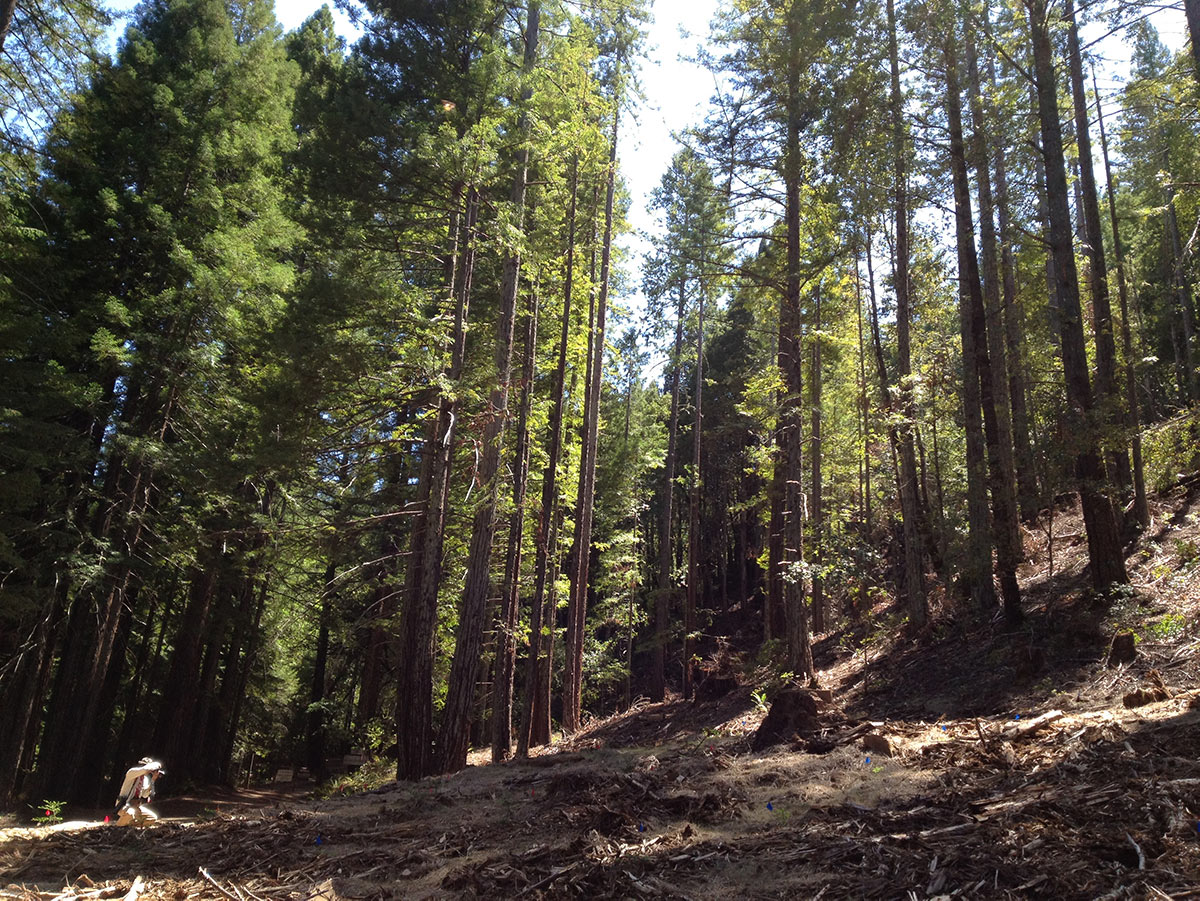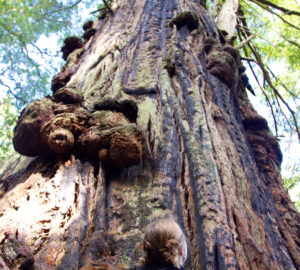Can people who care about protecting redwood forests buy these redwood products with a clear conscience?

Beautiful and resistant to decay and insects, coast redwood has long been a popular building material. During the California Gold Rush, which started in 1849, hundreds of thousands of people came to the state, and redwoods were logged extensively to satisfy the explosive demand for lumber. Only 5 percent of the original old-growth coast redwood forest remains.
Today, nearly all harvested redwood comes from young trees, and is often used for decks, fences, and arbors. Can people who care about protecting redwood forests buy these redwood products with a clear conscience? The answer is a qualified “yes.” Save the Redwoods League is opposed to cutting down ancient redwoods. But we support selective harvesting on previously cut-over lands. In fact, such harvesting can prevent forest conversion to non-forest uses and lessen the impacts of climate change—if it’s done in a way that protects the ecosystem.
What is sustainable forestry?
Douglas D. Piirto, Ph.D., provides his perspective as an expert on the subject. He is a California Registered Professional Forester with broad experience studying and managing redwood forests on public and private lands. Piirto served as a professor, scientist, and forester at California Polytechnic State University and worked as a forester for the U.S. Forest Service. In addition, he helped develop California’s forest protection rules as a member of the California Board of Forestry and Fire Protection.
“Sustainable forestry” once meant balancing growth with harvesting. But the concept was all about trees, with little regard for other life in the forests. Piirto said that today, thanks to rigorous state and federal laws, sustainable forestry involves harvesting trees while protecting whole ecosystems.
As the population grows, so does pressure to sell privately owned forestland for conversion to vineyards, subdivisions, shopping centers, and the like.
If landowners can make a living from redwoods, more forestland will remain.
“California has highly trained foresters and very rigid requirements for the practice of forestry,” Piirto said. For example, he explained that fisheries and archaeological sites must be protected. Roads must be engineered and built to minimize erosion. The needs of certain rare wildlife species, such as spotted owls and marbled murrelets, affect if, when, and where logging can occur.
Consumers can look for redwood and other wood products certified by a third-party organization such as the Forest Stewardship Council (FSC), which promotes the responsible management of the world’s forests. FSC-certified products (including Redwoods magazine) cost a little more. But they give consumers a way to vote with their pocketbooks for healthy forest ecosystems worldwide.
Retired now, Piirto is proud of the increasingly sophisticated science that guides his field. “People think that all foresters do is cut down trees,” Piirto said. “No—we grow forests for the future.”
Purchasing sustainably produced redwood can even help lessen the impacts of climate change.
“Coast redwood is one of the most productive tree species in the world,” Piirto said. “If I’m growing redwoods, I’m sequestering carbon—a lot of carbon.” In fact, young forests can store significant amounts of carbon in a relatively short time, making them a powerful resource in the fight against climate change.
SUSTAINABLE USE OF REDWOOD
What
Buying redwood products sourced from sustainably managed young forests can prevent forestland conversion to non-forest uses and can lessen the impacts of climate change. Consumers can look for redwood and other wood products certified by a third-party organization such as the Forest Stewardship Council (FSC), which promotes the responsible management of the world’s forests.
Expert Featured in this Story
Douglas D. Piirto, Ph.D., is a California Registered Professional Forester with more than 40 years of experience in studying and managing redwood forests. He served as a professor, scientist, and forester at California Polytechnic State University, worked as a forester for the U.S. Forest Service, and helped develop California’s forest protection rules as a member of the California Board of Forestry and Fire Protection.
Do You Have a Question About Redwoods?
Send your questions to us at Redwoods@SaveTheRedwoods.org.
This feature appears in the beautiful printed edition of Redwoods magazine, a showcase of redwoods conservation stories by leading scientists and writers, as well as breathtaking photos, answers to readers’ questions, and how you can help the forest.
Join our thousands of members today for only $25, and you’ll get future editions of our Redwoods magazine.

